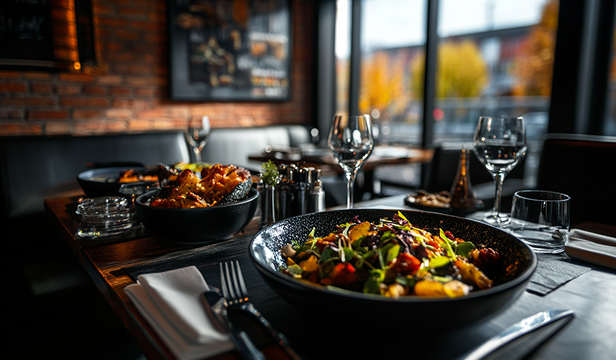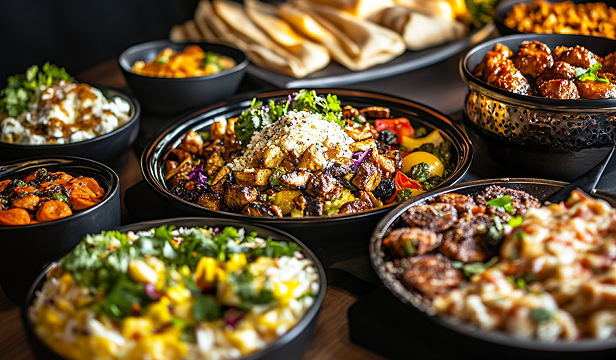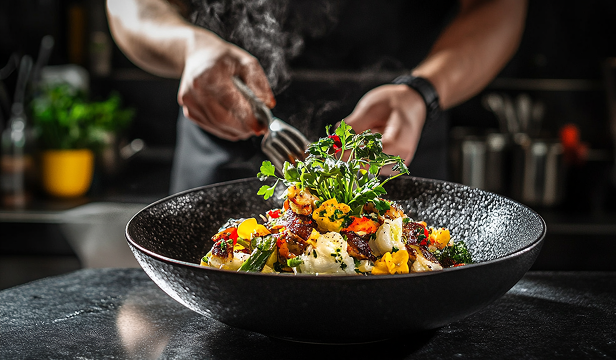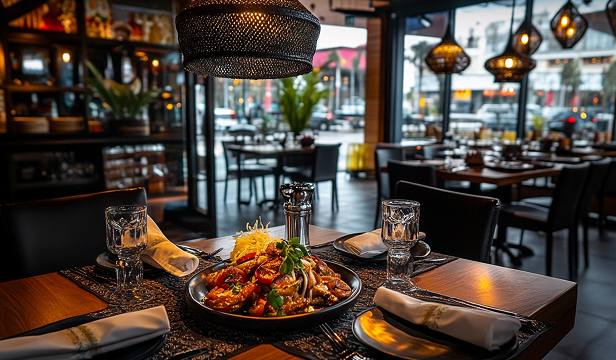Introduction Middle Eastern art is renowned for its intricate patterns, rich colours, and deep cultural…

Themed Dining: How Art Movements Inspire Restaurant Menus
Introduction
Art and cuisine share a deep connection, both serving as mediums for creative expression. Themed dining experiences take inspiration from art movements, transforming restaurant menus into visually stunning and conceptually rich culinary experiences. From Impressionism to Surrealism, chefs around the world are drawing from iconic artistic styles to craft menus that delight both the eye and the palate.
1. Impressionism: Capturing Light and Colour in Cuisine
Impressionist art, characterised by soft brushstrokes and vibrant colours, translates beautifully into food presentation and menu design.
- Key Elements: Light, seasonal ingredients, fresh herbs, and delicate plating.
- Example Dishes:
- Watercolour-inspired seafood tartare with edible flowers.
- Light soufflés and airy mousses mimicking Monet’s delicate brushstrokes.
- Restaurants: Some fine dining establishments curate Impressionist-themed evenings, pairing delicate dishes with soft lighting and pastel decor.
2. Cubism: Deconstructing and Reimagining Dishes
Cubism, pioneered by Picasso and Braque, focuses on breaking down subjects into geometric forms.
- Key Elements: Deconstructed plating, bold textures, and layered flavours.
- Example Dishes:
- A deconstructed beef wellington, presenting each element separately.
- Geometric-inspired desserts with layered cubes of mousse and sponge.
- Restaurants: Avant-garde dining spaces experiment with asymmetrical plating and cubist-inspired dish presentations.
3. Surrealism: Playful, Unexpected Culinary Creations
Inspired by dreams and the subconscious, Surrealist menus challenge perceptions and engage the imagination.
- Key Elements: Unexpected ingredient pairings, interactive elements, and whimsical presentations.
- Example Dishes:
- Floating desserts served with levitating plates or dry ice.
- Salvador Dalí-inspired melted cheese courses with surprising textures.
- Restaurants: Some experimental chefs play with food illusions, such as edible landscapes or trompe-l’œil dishes that look like everyday objects.
4. Minimalism: The Beauty of Simplicity in Food
Minimalism in art emphasises clean lines and simplicity, which translates into modern fine dining.
- Key Elements: Fewer ingredients, high-quality produce, and elegant presentation.
- Example Dishes:
- A single, perfectly prepared protein with minimal garnishes.
- Pure, unprocessed ingredients presented with refined elegance.
- Restaurants: Minimalist menus thrive in Japanese and Scandinavian fine dining, focusing on purity and essence.
5. Pop Art: Vibrant, Bold, and Playful Dining
Pop Art, made famous by Andy Warhol and Roy Lichtenstein, embraces colour, repetition, and commercial aesthetics.
- Key Elements: Bright colours, nostalgic ingredients, and bold presentation.
- Example Dishes:
- Neon-coloured cocktails and oversized desserts.
- Retro fast food recreated with gourmet techniques.
- Restaurants: Many modern cafes and burger joints incorporate Pop Art themes with comic-style decor and vibrant plating.
6. Gothic and Baroque: Opulent, Dark, and Dramatic Menus
Gothic and Baroque art styles evoke mystery, richness, and grandeur.
- Key Elements: Deep, dark colours, luxurious ingredients, and ornate plating.
- Example Dishes:
- Truffle-infused dishes with gold leaf and black garlic.
- Decadent dark chocolate and red wine pairings.
- Restaurants: Luxury dining spaces use candlelit settings, heavy drapery, and gold-rimmed tableware to enhance the theme.
Conclusion
Themed dining inspired by art movements provides an immersive culinary experience that delights both the senses and the imagination. By integrating artistic concepts into their menus, chefs can craft dining experiences that go beyond taste, offering a visual and emotional journey through history’s greatest artistic innovations. Whether through surrealist surprises or minimalist elegance, art-inspired dining continues to redefine how we experience food.



